I had made an effort to be in contact with the Metta Development Foundation, which is the largest and most competent of the local NGOs in Myanmar. I had previously met the Director, Sai Sam Kham on a couple of occasions and this year, I was determined to do a joint project with them. We decided on a Stove and PV Training in Lashio, which is the largest town in Northern Shan State, not too far from the border with China.
|
Lashio I had made an effort to be in contact with the Metta Development Foundation, which is the largest and most competent of the local NGOs in Myanmar. I had previously met the Director, Sai Sam Kham on a couple of occasions and this year, I was determined to do a joint project with them. We decided on a Stove and PV Training in Lashio, which is the largest town in Northern Shan State, not too far from the border with China. The training lasted 11 days and was held in the Metta demonstration farm, just outside town. Set in 30 acres of forest and paddy fields, this site was perfect. The participants were from all over Myanmar, from Mytkina in the north to Bogalay in the south – I was honored that people had traveled so far to take my training. These participants were a somewhat specialized group in that they were already employed as community activists and technicians. They indeed proved to be a hard group to impress with my renewable bells and whistles, but by the end, I had won them over and they genuinely thanked me for the new knowledge they had gained. As always, I myself learned some valuable lessons during the training. This time, I discovered that there are better clays than the one I had used at the two Asia Light trainings, which did not produce really strong bricks. Mr Lum Po, the farm manager kindly showed us where the best clay was to be found. It turned out that at the bottom of the irrigation ditches feeding the paddy fields there was a rich black clay and elsewhere there was a an outcrop of thick brown clay. These proved to be far superior to the clays I had used before. Mr Lum Po also showed us some termite hills and knowing that repairs to brick houses in Madagascar were made with termite clay, famed for it's stickiness and strength, I thought I would try that too.
0 Comments
I returned to Madagascar this year with two projects in mind - a solar hot water system and the repair of PV systems in remote clinics. My time was limited to six weeks, but in the end, that proved to be sufficient. I had already decided to wind down the operation in Madagascar and this trip was, in a sense, a farewell tour. Last year I had promised my good friend Zoe, that I would install a solar hot water system in Akany Tafita, the children's center in Anosibe, a very poor quartier of Tana, where I had stayed previously. They had added a second floor to the building that included classrooms upstairs, along with two studio apartments. This expansion was designed to increase the center's revenue stream from social functions on the ground floor and rentals from the apartments above. Although I had just gained some experience installing a solar hot water system in Burma, I was a little nervous about working on a sloped metal roof, as my left knee had recently given out, and could not be relied on. Imagine my delight when I found out that the purchase price of the system include free installation! In the end, this was the best solution as there was some heavy lifting and complex welding involved, and the days when I could do that on a slippery metal roof are behind me now. With myself in the role of supervisor, the installation was completed in three days, as the team from Majinco Solar was quite competent and professional. What a joy to have a hot shower on a cool evening in Tana! This hot water system will be of great benefit to the children's center – it will make the apartments more attractive to tenants and the kids can have hot showers, something they would never have at home. Extra hot water will be used for laundry and dish-washing. Improved health, increased self esteem and a sense of well-being are all benefits we expect to flow from this new access to solar hot water. Last year, during the solar PV trainings I conducted in several villages, I learned that many remote clinics had solar systems that were no longer functioning. They had been installed by NGOs from France and Finland about 7 or 8 years ago and now the batteries were dead. I worked with Ny Tanintsika, a local NGO, to select the eleven clinics to visit. Some we could repair on the spot, some I had to return to Tana to buy new batteries etc. Interestingly, the quality of the original equipment and installation was usually high, but sometimes the original design was flawed, and the systems never performed properly or for very long. I hired a truck from Ny Tanintsika and with driver, guide and translator, we headed off into the wilds of Madagascar. And I mean the wilds! We had to cross rivers by ferry, replace the wooden road-bed on bridges and pass through country well-known for banditry. It was indeed, one of the great Solar Roots hard-traveling adventure trips. We had our share of adventures too – we crossed a rickety bridge without difficulty on the outward journey, but imagine our surprise on the return leg to find that the wooden beams had all been stolen and that there was no way to cross. Luckily, after a couple of hours, a big Mercedes truck arrived with just enough beams and tree trunks aboard to get us both across. (I guess these truckers have to be prepared for any eventuality!). I have difficulty accepting that certain individuals would be so selfish as to steal these beams and leave several communities, comprising of thousands of people, isolated from the rest of the country, from emergency health care and indeed from daily supplies trucked in over that bridge. One interesting thing was the reception we got from the staff at the various clinics. Usually, they were delighted that we had restored electric light to the clinic and they expressed their thanks profusely, sometimes with personal gifts for me, once including a chicken! But sometimes things turned sour when it became apparent that my primary mission was to ensure that the lights in the clinic functioned, even if that meant disconnecting the TV/video and cell phone charging station that the doctor and midwife had going on as little side businesses. But I was firm in my resolve – my funds and my mission were dedicated to the benefit of the patients and improving the quality of health care. I came across other incidences of malfeasance, like the case where no patients could stay overnight in one clinic because the previous doctor had stolen all but two of the mattresses. One repair job, in the village of Ankaramena, gave me particular satisfaction. The doctor was an unassuming man who was himself disabled, as a result of a physical assault. He had never had electricity in his own house before and I felt privileged to be able to provide that small service for him. Unfortunately, we didn't get much time to spend with the clinic staff, to get to know them better. Usually, we had to do the repair and get back on the road, so we could arrive at the next site before night fell. Traveling at night in remote, bandit country in Madagascar is not recommended. As I mentioned in Burmese Times #6, we regularly had to pass the as-yet incomplete monument to the Catholic priest who was shot dead in his car, only a month earlier. The economy and rule of law have deteriorated so much since the coup d'etat four years ago, that the police and the bandits work hand-in-hand. Sometimes, police weapons are actually used in the commission of robberies. All-in-all, we visited eleven clinics, made repairs to nine of them, replaced twelve batteries, four charge controllers, one PV panel and two inverters. This work was made possible by a very generous donation from the Fort Fund of San Francisco, which covered most of the equipment cost and vehicle hire. Solar Roots donations paid for the remainder. So, my time in Madagscar is at an end. I have learned many things about the country and about myself. But I feel it's time to move on. Next year I will concentrate on Myanmar, and setting up a permanent workshop and training center there.
Another trip overseas is finished and it’s time for reflection and planning for next year. But first another excerpt from my Malagasy Journal. I arrived in Madagascar this year with hopes and plans and enough funds to execute both. However, from Day One, it was to prove my most difficult trip, from a psychological and emotional point of view. I was depressed and despondent much of the time and being attacked by a modern day cut-purse, whose razor sliced right through my bag, notebook, t-shirt, and trousers shortly after I arrived, set me off on negative attitudinal decline that I only fully pulled out of at the end of the trip. But, as always, there were delightful moments and some real achievements, a few of which I will recount here. Ambohimahamasina Revisited One of the two large projects I had pre-arranged with Sam, of Ny Tanintsika, a local NGO, was to install a 420 Watt PV system to power the Soamiray women’s basketry co-operative in Ambohimahamasina. A new two-storey building had just been completed with funds from Prosperer, a private sector/state funder that supports rural enterprises. They also funded the solar system, though not quite to the extend of the 1,000 Watts I had originally asked for. If I had been in charge of the purchasing, we could have bought the larger system for the same amount of money, but that’s another story! I had the metal racking for the panels welded up in Fianarantsoa and made the usual rounds of the covered market in Tsaralalanana, Tana, to get the best prices for tools, and cable etc. I had asked for 3 helpers to assist with the heavy lifting and to train up as knowledgeable maintenance men. But in the end, it turned out to be a jobs-program, where two were on-the-ball enough to grasp the fundamentals of PV and electricity, but three were restricted to heavy lifting under strict supervision. Luckily, the winter weather In Madagascar is a delight to work in – a bit like summer in the Bay Area – cool, even foggy, mornings and evenings, with a pleasantly hot afternoon. The orientation and tilt angle for the panels was a bit of a challenge as the roof pointed north-west and it already had a 30 degree slope. But as all those who attended my later training sessions will , I hope, know, the panels must face due North in Madagascar and in Ambohimahamasina, should be tilted at about 22 degrees. I left a space on the racking for two more panels, should the funds ever become available. In short, the installation went very smoothly and we were even able to provide power for the local electricians who did the interior wiring of the lights and plugs. Three of the upstairs rooms of the Vannerie (basket weaving), building are dormitory rooms where tourists who come for trekking can stay. The co-op ladies manage this little business and it is another source of income for them. All in all, there are now 26 lights and 15 plugs, all powered by solar energy. The system was heralded by the whole community as a great success. I later came across a cheap source of what seemed like reliable panels in Tana, so purchasing two, I returned to Ambohimahamasina to complete the installation. PV Trainings This year I held three PV training sessions – one in Tana for professionals or people wanting to break into PV, one in Solila and one in Ambalavao. The last two were attended by people who were already responsible for solar system attached to schools and clinics. The Tana one I gave in French as usual, but for the other two I was able to teach in English and have it simultaneously translated into Malagasy. This was a big improvement – many thanks to my translator Mamy Ives! Another innovation this year was the formalization of the curriculum for the Introduction to PV course. It took me 10 days of combing through all my reference books to come up with a 10-page document. But now it’s done and each new training can be tailored to the participants using this curriculum. Mamy Ives is translating it into Malagasy and I’m sending it off for translation into Karen and Burmese. Sambavy Another fun project this year was a quick visit to the village of Sambavy, near Fianarantsoa. This is the location of a large tea plantation and is tucked away in beautiful hills about 25 kms out of town. This was another small pilot project where we gave LED lights and small batteries to 12 householders and a solar panel to one responsible person, who would operate the charging station as a small enterprise. I had brought the ultra-efficient lights from Burma and bought the rest of the equipment locally. Unfortunately, the high cost of the batteries and solar panel means that the charging fees and replacement costs will be much higher than in Burma. The batteries are brought back to the charging station twice a week and the latest report is that the pilot program is a great success. So another trip to L’ile Rouge was concluded and I was happy to head back to California, via Thailand. Eight months on the road is a long time and I plan to manage my schedule next year with more attention to rest and relaxation. We’ll see!  I spent an afternoon at a battery repair shop, right there on the street in Fianarantsoa. The batteries are cut open, the ruined plates removed and replacements installed. The same acid is poured back in and you are out the door for $30! If they last another year, it's economically viable, but it's a dangerous, toxic business. 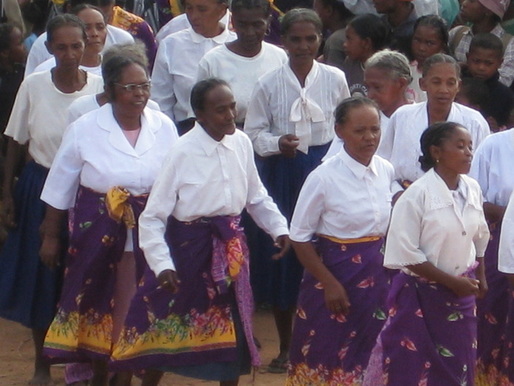 Matching lambas during a dance performance Matching lambas during a dance performance Malagasy Style The Malagasy people are actually very stylish dressers in my opinion. Perhaps not in a style recognized by the international community, (a bit like their government), but in a style at once personal and idiosyncratic. The love of bright colors is evident in the sheets, blankets and lambas that people swathe themselves and their babies in. The lamba is a multi-purpose sheet of cloth that is used as a sarong, a baby carrier or head wrap. It has deep significance in Malagasy culture and was traditionally woven from local thread. Now most women wear a mass produced lamba of printed fabric. One of the fashion idiosyncrasies is that men often wear garments in delicate hues and to see a man sporting a shirt in flaming pink or very feminine lime green is not so unusual. The further one is from the city and foreign influence the more individual stylistic expression reigns. One amazing phenomenon is the access Malagasy people have to very stylish and well tailored clothes second-hand from Europe. Many times I see people in $120 North Face or Polar Tec jackets that they picked up for $5 in the market. These clothes are donated to the equivalent of the Salvation Army in Europe and sold by the kilo to entrepreneurs who sell them at the local market. To my eye, perhaps the most stylish expression is to be found in the variety of head gear available. Many straw hats are sold, but not Panamas; they are more like the pork pie hats made famous by Lester Young and Dizzy Gillespie, with a beautiful line of pink woven through them. Of course they are worn at a jaunty angle, sometimes pulled down to shade the eyes. Women often wear straw hats with a bowl crown, a large brim with a tattered edge and the resulting dappled sunlight on the face is quite, quite alluring. The French influence is evident in the proliferation of berets and caps worn by city men. In fact, this year after visiting Laos, Vietnam and Madagascar, all ex-French colonies, I conclude that the main cultural legacy left by these gaullic invaders comprises of berets, baguettes, and petanque! Stovin’ I had intended to concentrate on improved cook stoves this year, but the best laid plans on mice and men and well-meaning vahaza, (foreigners), gang aft aglay. However, I did make some inroads into learning about what stoves are available on the local market and I actually started a working relationship with two stove producers, M. Mamy and M. Roland Berma. M.Mamy and his extended family are really aluminum smelters to trade, producing spoons,cocottes (pots), and jewellery, all made from recycled aluminum window frames doors. By a great stroke of luck, I was led to their door and discovered that they had made the covers/pot supports for a series of stoves ordered by ADES, a Swiss NGO working principally with solar cookers. Straight away, I commissioned 10 new stoves to be built, that I named the ‘Apro-Acme’, since the design was actually spawned at the Aprovecho Research Center. I didn’t get much opportunity to test them out, but just before leaving I did discover that there has been design drift leading to the covers/pot supports being shorter than the original specification which diminishes the draft through the stove. Next year I will bring them a new cast iron model that will get them back on track to the original specs. I did have M.Mamy make two pots with integral pot skirts, that is, another another pot without a bottom that surrounds and is attached to the first one. This skirt captures the heat that is normally lost at the sides of the pot and forces it to scrape against the sides of the pot, thereby increasing the heat transfer into the pot and its contents. Increasing heat transfer into the pot is the Holy Grail of Stovers and it’s said that a pot skirt can reduce fuel consumption by 20-30%. We’ll see, I’m taking one back to the Aprovecho Research Center laboratory for testing. Malagasy Taxis Most city taxis in Madagascar are old Renault 4s, sometimes up to 50 years old. There are a few Deux Chevaux, and a few more modern Renaults (from the 70’s), but the field is utterly dominated by the farmer’s friend, the Renault 4. It has numerous advantages including a really spongey suspension that survives well the many cobbled streets in Tana and other towns, it is extremely simple to repair, with all parts being easily available or easily fabricated locally, it’s economical on gas as there really isn’t much metal in it and you can still pick up a completely refurbished one for $3 to 4,000. At first I was puzzled by the constant smell of petroleum inside the taxis, until I realized that the one-liter plastic bottle at my feet was in fact always full of gas! This is because the high cost of fuel forces taxi drivers to buy only one liter at a time. However, in the countryside, la brousse, the chariot of choice is the venerable Peugeot 404 pick up. These vehicles are unbelievable in their ruggedness and longevity. They have metal dashboards and so many welded repairs and replacement parts that they look like my uncle’s axe, that had 6 new handles and 3 new heads, but was still the best axe I ever had. Like the human body, the Malgasy Peugeot 404 seems to change its entire cell structure every 7 years! The only way to go from city to city is to take a taxi brousse which will usually be a 15 seater mini van, Toyoya or Mazda. This year I broke a couple of my personal bests in terms of cramming human bodies into vehicles: 25 into a 15-seater mini van and if you can believe it, 25 into a Peugeot 404 pick up, which had much baggage piled up on the metal cage + canvas “roof”, and had two bicycles on top for good measure. Needless to say, we broke the transmission on that last mentioned voyage. I once saw a decal stuck on the side of a taxi brousse that, instead of saying “No Fear”, actually said “No Far”! A wee Scottish voice in my head said, “you’re no kiddin’ pal!” My record for shortest journey before breakdown was 500meters. Lastly, in some towns there are no taxis and one has to take a pousse-pousse, a rickshaw. I rapidly found out that there is no bodily position that can assuage the psychological discomfort that accompanies being pulled along by another human being. Arms akimbo, legs crossed or even arm slung casually over baggage – none of it works. It’s impossible to feel a l’aise while someone else sweats and struggles to get you from one place to another. Soatana While I was cooling my heels in Fianarantsoa, waiting for a PV project to be funded, I took a side trip with two French friends to the nearby village of Soatanana. Beautifully located next to a steep rock massif, this village is famous for being the center of an unusual Malagasy Christian cult. Founded in the 1890s by a Malagasy man who was seriously ill, then cured by divine intervention, the cult now has thousands of adherents and is to be found in all parts of the country. Defining features of this faith are that the members are always completely dressed in white, (to symbolize purity), their main form of worship is singing, they wash the feet of travelers and they do not pratice “second burial”, (which is common among most other groups). They do however, practice evangelism, which I was less keen on. Never-the-less, they treated us with great respect and welcomed us into their midst. We attended a Sunday mass with several hundred believers and enjoyed greatly their renditions of old hymns, in a distinctive Malagasy style. Mahazony and Miarnanarivo Although the funding for the PV system on the new Maison de Vannerie, (basket weaving), in Ambohihamasina never did come through, Samantha at Feedback Madagascar did tell me about three villages with clinic solar systems that could use some help. The first clinic was in Mahazony and served a population of around 11,000. M.Hasina and his wife, the residents medics, put me up me in their house while I diagnosed the problems with the PV system, installed 7 years ago by Electriciens Sans Frontieres. The PV panels still worked, but the batteries were totaled and unbelievably, someone had wrecked the charge controller by brutally removing several of the key electronic components. Luckily, I had an exact replacement charge controller, but it was stored back in Tana, a two-day, several taxi brousse journey away! Since the batteries were only available in Tana anyway, I decided to make the trip. Joy was unbounded when I had completed the installation and the 10-room clinic plus the medics house were ablaze with light for the first time in four years. I also brought back a battery for the system in the little rooms made available to family members of patients, (more on that later). This trip I brought my newly purchased mountain bike which allowed me to visit the next village, Miarnanarivo, which has no taxi brousse service. There, the problem was, of course, a set of totaled batteries, but also some strangely low voltage readings on the solar panels. Upon further investigation I found that the panels had been incorrectly wired from the get-go and could never have kept the batteries charged under any circumstances. I rewired the panels, put in the new battery, (which the clinic guard from Mahazony had carried on the back of his bike for 2 hours), and the system fired up like a wee champ. The system for the relatives of the Mahazony patients also suffered low voltage disease, so I rewired that panel too and they had electric light, probably for the first time in their lives. I was suddenly the most popular guy in town. A run for mayor of the commune was bandied about for a while, but I told them that I thought I really should learn their language before running for political office!
The Yoghurt King and the Disc Jockey The event that has dominated my entire stay here in Madagascar is la crise politique. The present regime, headed by a baby-faced ex-radio disc jockey, took power illegally, just over a year ago. The ex-president, a yoghurt factory-owning multi-millionaire is now in comfortable exile in South Africa. The ex-Pres, although being legitimately elected, generally approved of by the populace, and having presided over strong economic growth and significant environmental protection, had difficulty distinguishing between state assets and his own. He also was taking Madagascar out of the sphere of French influence and into the arms of the anglophone world. Most Malagasy people believe that France helped organize the coup that brought our disc-spinning friend to power, with the assistance of a dissident army faction. The result has been an unmitigated disaster for the country and the already long-suffering people. Madagascar has been isolated internationally. The US won’t buy its maquiladora clothes, the tourists have fled in droves and the present regime is selling off everything it can at bargain basement prices. Crime has exploded and the feeling of insecurity among the population is palpable. This state of affairs has cast a pall over my entire stay here and I can only hope that it is resolved soon to alleviate the suffering of these peaceful, hard-working people. The Solar Cooker Fiasco Before leaving the US I was asked to help get some new solar cookers out of Customs in Madagascar and to demonstrate them to interested parties. Sounds easy enough? Little did I know that I would be required to haunt the halls of the Customs Dept everyday for five weeks, have a rubber stamp made up in order to “customize” a document and having triumphantly liberated the cookers from the maw of the bureaucrats find out that the dashed things didn’t even work properly! I tested the cookers several times, but could only reach an oil temperature of 108 degrees C, whereas John, the inventor regularly reached over 200 degrees C in his native Hawaii. Even my little home-brewed unit, the Acme Windshield Reflector Solar Cooker, out performed the stainless steel giant. John is stumped by the poor performance, but I think that the tubes sent to me were defective and that the next shipment will be good. However, they will have to find someone else to stalk the Custom halls! Ambohimahamasina I found Feedback Madagascar, a Scottish NGO, online and contacted Samantha Cameron, the regional director in Fianarantsoa, a town south of Tana, to offer my services. Through her, I visited the village of Ambohimahamsina to check out a recently installed solar system that wasn’t working properly. I also took a tube solar cooker and a water sterilizing unit, hoping they would be really useful there. After all the hassle of getting these cookers out of Customs, you can imagine my state of mind when I discovered the tube had been completely smashed in transit from China. The water sterilizer was a big hit though, and my own little Acme Windshield Reflector cooker generated some interest too. I soon found out why the PV system was performing so poorly. In the Northern Hemisphere, we orient our panels towards the South, and in the Southern Hemisphere, the opposite holds true. Well, someone had managed to flaunt this cardinal rule of orientation, with disasterous consequences for the battery. After only 6 months of operation, the $400 battery was ruined. I decided to completely revamp and expand the system and offered to pay for half of it, about $1,000. This particular system is on a remote rural clinic, which serves over 16,000 people and has a permanent doctor, with whom I stayed. Dr Jacqui, a gusty and gutsy Malagasy lady was always ready with a smile, a joke or a jibe about wimpy vahaza, whichever the situation called for. I had help from two local men, M. Donne and M. Jaques. The first, with some knowledge of electricity, the second, ever-so-sweet, but a walking hazard on a job-site! We installed the PV system in 3 easy days, then spent the next 7 completely rewiring all the lights in ten rooms of the clinic. I was extremely satisfied with the results, given that the village is on the eastern side of the Hauts Plateaux, where the weather was foggy in the morning and cloudy by 3pm. Everyone was delighted with the new system, since now night-time births are well illuminated, attendants can turn on a light for an emergency and clinic staff get reliable electricity in their modest homes. I really only got one day off and with a couple of other volunteers took a hike round a local mountain. Unfortunately, it was foggy all day, but our guide told us where everything was and we just had to imagine the rest! A highlight was a lunch of duck with a local family and a visit to small raffia weaving cooperative. This region is on the edge of the eastern mountain range and is being developed by the local people, with help from Feedback, as a center of hiking and eco-tourism. I was very impressed by the initiative and follow-through of these people. The land is fertile, the rainfall copious and the people industrious, (if somewhat given to over consumption of the local cane spirit). In my next epistle, I will describe two weeks I spent in a village in a region to the west of Tana, en pleine brousse, in what the Malagasy call the “Far West”. Quite, quite different from Ambohimahamasina.
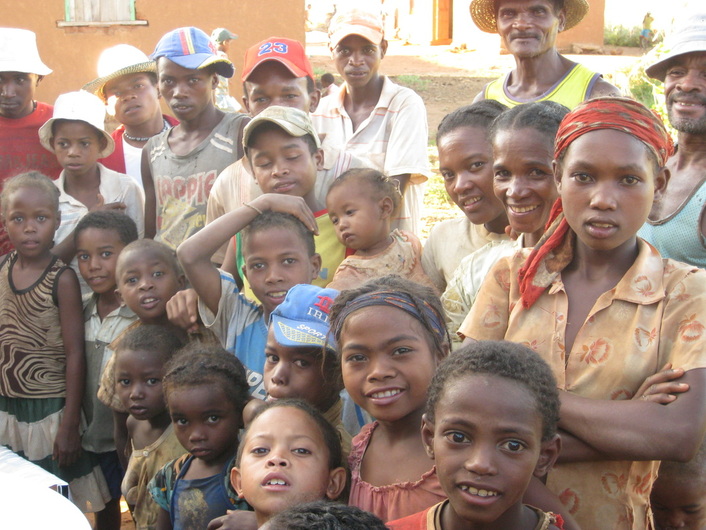 Villagers from Fiadanana, gathered to hear about solar cooking Villagers from Fiadanana, gathered to hear about solar cooking Madagascar It was a quick decision just before I left Berkeley, to pay a visit to Madagascar. Like many people, I was aware of the exotic uniqueness of the flora, fauna and human culture, but it hadn’t been on my radar as a place for Solar Roots, (my new nom de plume), to operate. This is what I found: Madagascar is the world’s oldest island and its fourth largest in size. It used to be literally jammed in between Africa and India, back when Gondwana was a going concern. Of the 200,000 forms of flora and fauna, a staggering 150,000 are found nowhere else on earth. The Malagasy people first arrived 2,000 years ago and are a mixture of immigrants from what is today Indonesia/Malaysia and the African continent. The culture and the features of the people are a rich mélange reflecting now one backgound, then the other. 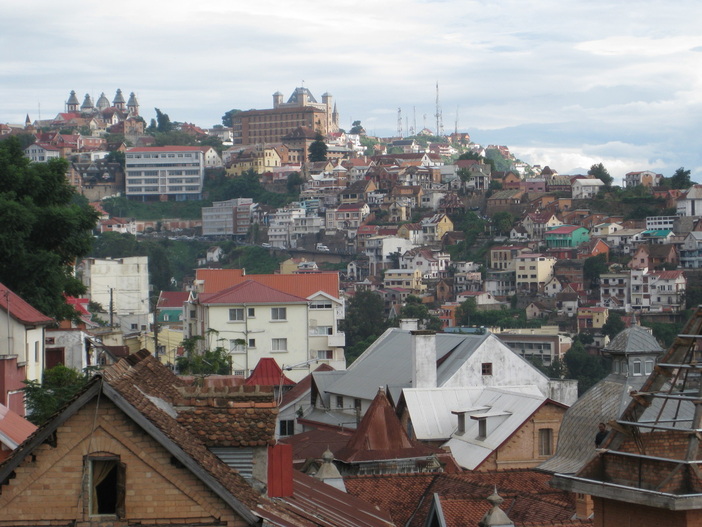 Antananarivo, or Tana, looking towards the Rova, (former Royal Palace) Antananarivo, or Tana, looking towards the Rova, (former Royal Palace) One arrives in Antananarivo (Tana) and is immediately taken by its cute tall, tiled-roof houses, its cobbled hilly streets, and its active street markets. After about two days of Tana’s appalling air quality, its hordes of street beggars and hustlers, its ever-present poverty and crime rate, one is ready to take off to gentler climes. That may be the easy way, but it’s not the Solar Roots way! I had to stick it out in grimy Tana for another six weeks. The reason being, I had agreed to get some new innovative solar cookers out of Customs and to demonstrate them to interested parties. I might as well have agreed to run for President of Madgascar, with as much hope of success in the allotted time! By the way, the post of President of Madagascar is available. More on the solar cooker saga and the current illegitimate regime later. 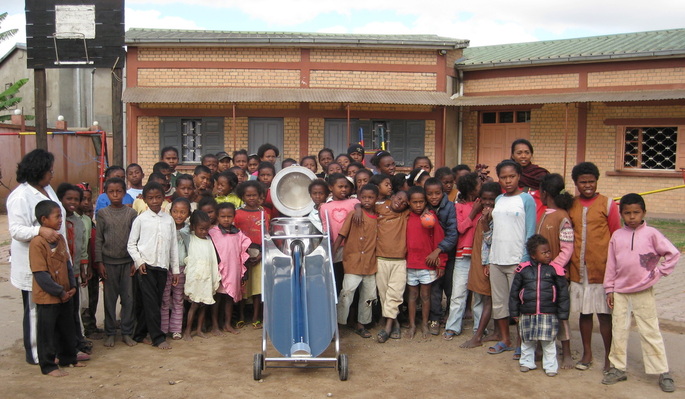 The Akany Tafita teachers and kids pose with one of the solar cookers The Akany Tafita teachers and kids pose with one of the solar cookers Antananarivo, means the Place of 1,000 People. This should be updated, as something north of 3 million people now crowd into its hilly streets and its sprawling slums. My own accommodation trajectory is an interesting illustration of the Tana neighborhoods. At the insistence of Ihanta, the founder of Association Zahana, the organization I had first made contact with, I started off in La Residence, a somewhat pretentious, empty hotel costing $40/day. “Because of crime”, Ihanta also insisted that I shouldn’t go out at night, so meals drove it up over $50/day. The neighborhood was fancy, but due to the ban on independent movement, I still don’t know where it’s located. After two days I moved into a Protestant Mission Guest House. At first, I was concerned I would have to have breakfast with zealous missionaries, but thankfully, it too, was empty. This neighborhood is high on one of the two principle ridges that form the core of Tana’s topography. For neighbors I had the Ministry of Justice, the huge Church of Saint Jean Baptiste and Le Bureau, cybercafe. It was very quiet at night. At $12.50 a day, this was more like the thing. But the hilly climbs, the dreadful air from the city center and the fact that it was a $3 taxi-ride away from my solar cookers drove me into the arms of Akany Tafita. Meaning “Nest of Progress”, Akany Tafita is a children’s center operated by the Anglican Church in the bas-quartier (slum) area of Anosibe. At $5 a night, I had finally arrived in Solar Roots territory! I have never lived in a severely deprived urban neighborhood before and I find that I really like it here. It feels less dangerous than the city center, but I do have to be home within half an hour of sunset! People treat me with a mild curiosity, but never regard me as the key to their economic salvation. Artful Dodgers and Dodgeresses abound, but they pursue their own games and scams, and leave me in peace.  Some folks, homeward bound from the market, appear out of the mist Some folks, homeward bound from the market, appear out of the mist There are 18 distinct ethnic groups in Madagascar, the dominant one being the Merina, who arrived 500-600 years ago. They compose 95% of Tana’s population and are the most evidently Asian-looking of all the groups. On the coasts one finds the predominantly African descended groups. The Malagasy people, though composed of many different tribes, are united by a common language and a belief in the power of their dead ancestors. The departed are considered to play an important role in the on-going well-being of their off-spring. They must be remembered, honored and sometimes taken out of the tomb, re-dressed and told about all the family events subsequent to their passing! So-called “taboos” (fady) abound and seem quite strange to the outsider. It’s fady to sing when you eat, (to say nothing of its difficulty!), as you will develop elongated teeth. It might be fady to work the land or hold a funeral on Tuesdays. It might be fady for a child to say his father’s name, or for a pregnant woman to sit in the doorway of her house. These proscriptions vary from tribe to tribe, even family to family. Luckily, vazaha (foreigners),are given a pass on such intricacies, and are not held to book for blunders like standing up while digging the corner post holes of a new house!  In the Hauts Plateaux on the way south to Fianarantsoa In the Hauts Plateaux on the way south to Fianarantsoa The Malagasy language is Indonesian in origin, with Swahili and Arabic additions. It’s not so difficult to pronounce, but knowing just where to put the accent can be challenging, as many words are over a dozen letters long. I’ve stopped talking about socialism in Malagasy, as that requires using the word foto-kevitra miompana amin’ny fitanan’ny fanjakana ny taozavatra sy ny varotra! Beautifully poetic and descriptive, Malagasy language is rich in imagery. Dusk is Misafo helika ny kary, which means, Darken the mouth of the cooking pot. Actually, I’m giving the wrong impression that I’ve made much progress in learning Malagasy. I have learned the basic polite phrases but have been communicating 99% of the time in French. I am thrilled that my French abilities have bounced back amazingly well after 35 years of dormancy. If I have the time, I’ll do a week-long course in Malagasy before leaving. If not, it’ll be my first priority when return next year. |
Archives
March 2017
Categories
All
|





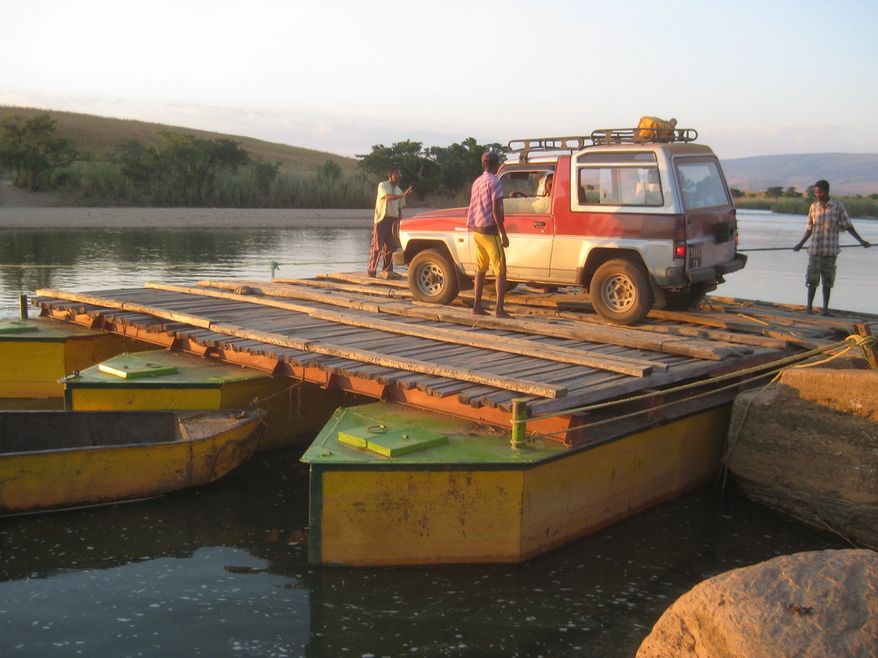


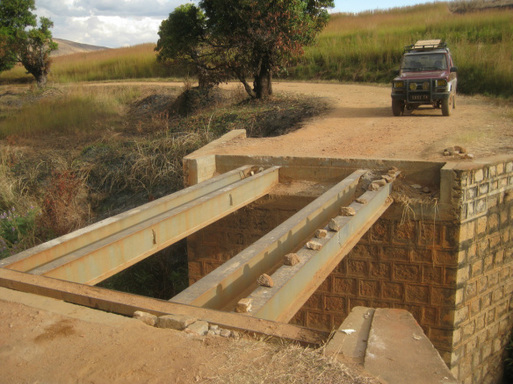



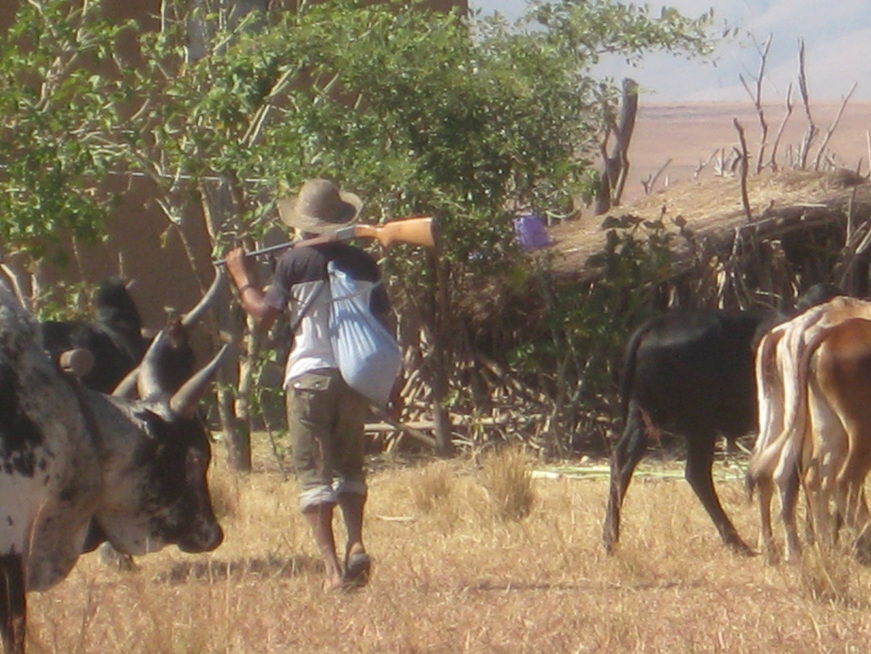





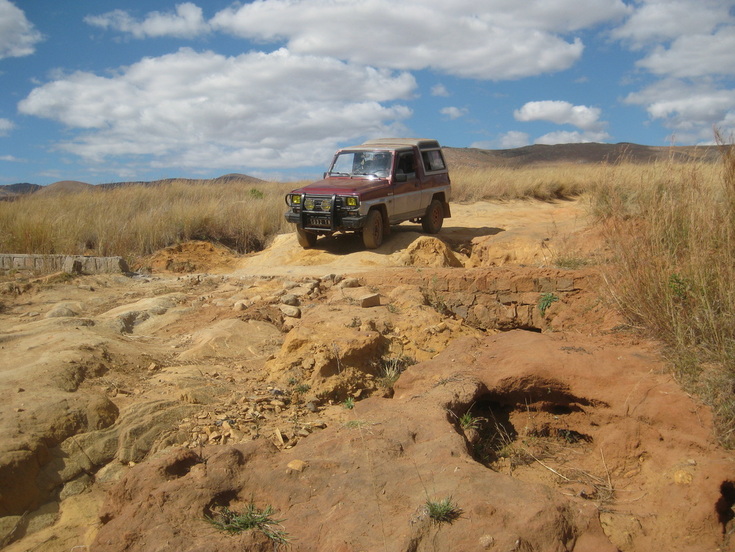

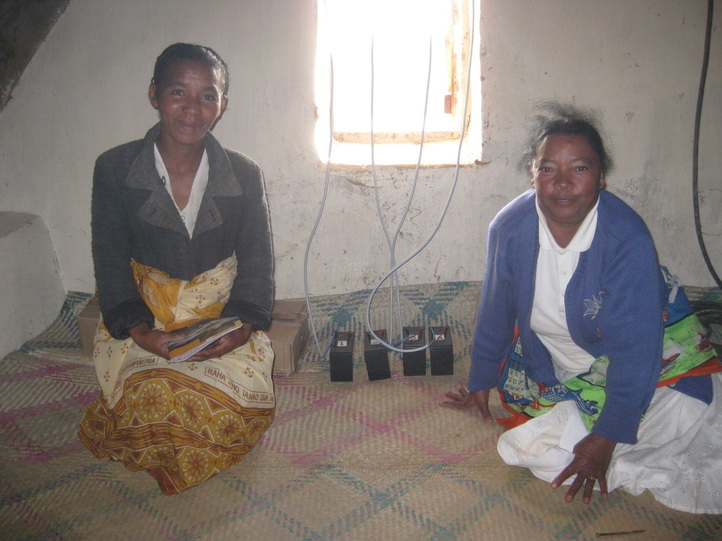

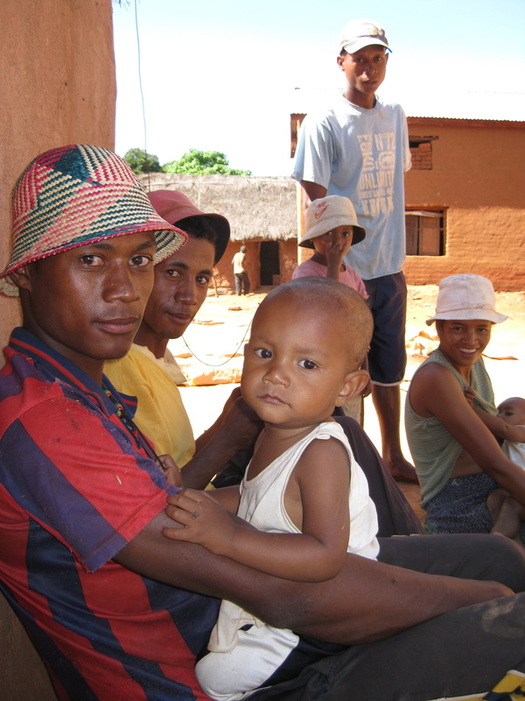
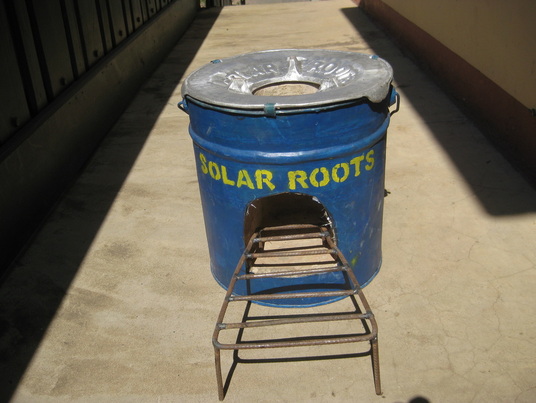





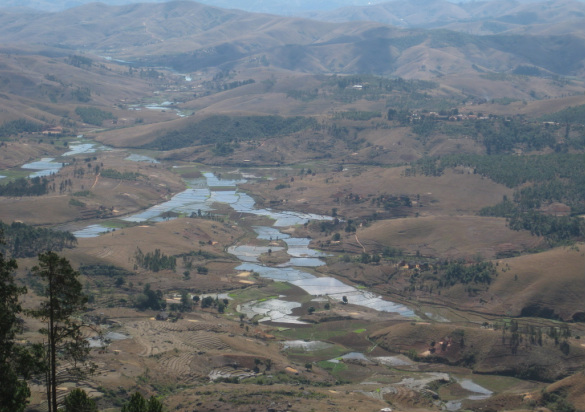
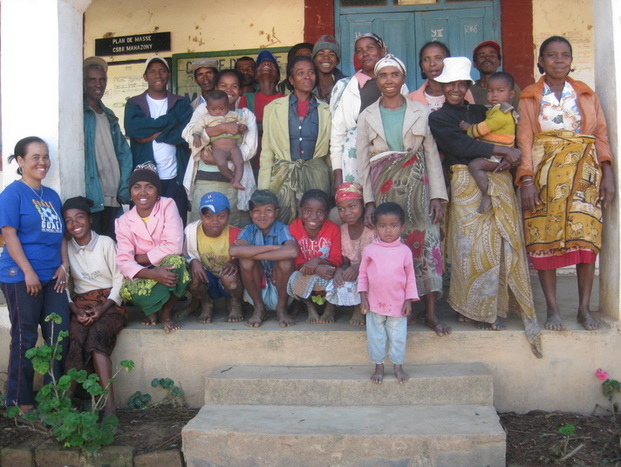
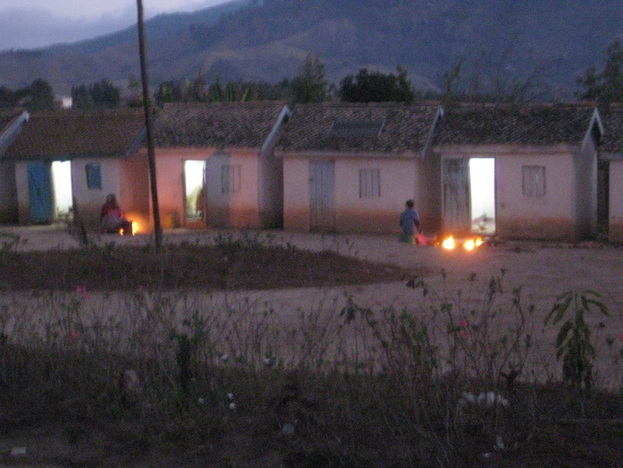
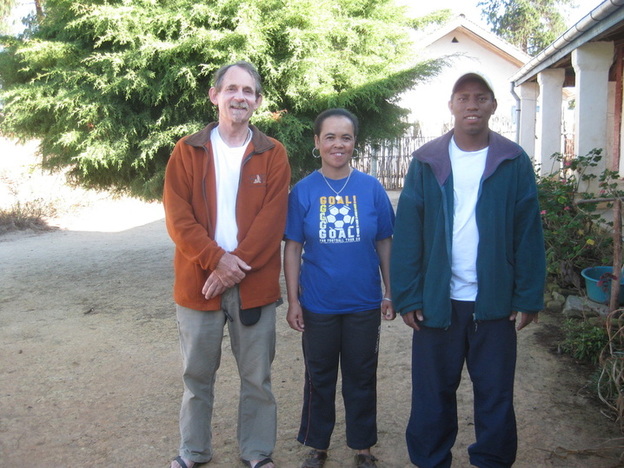
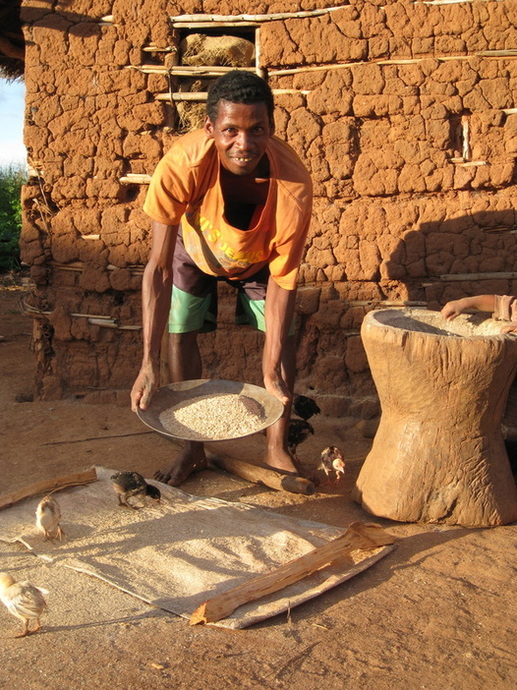

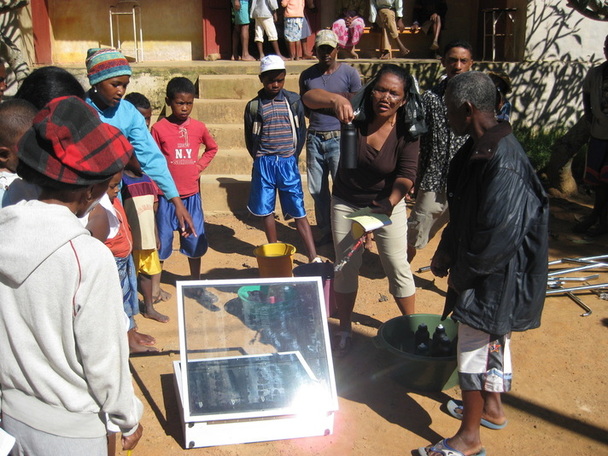
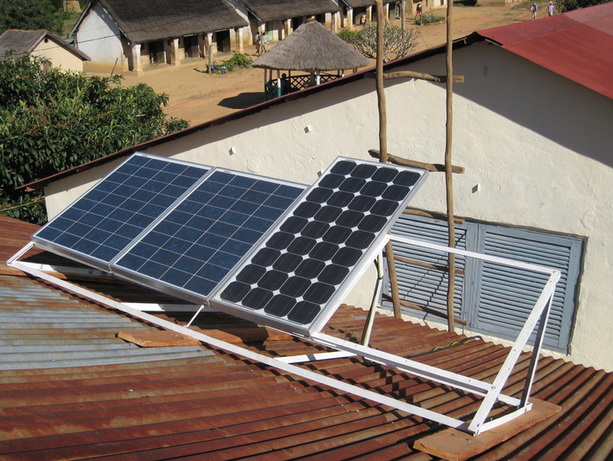


 RSS Feed
RSS Feed